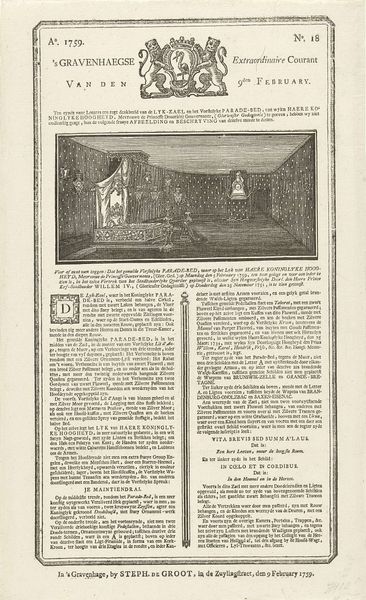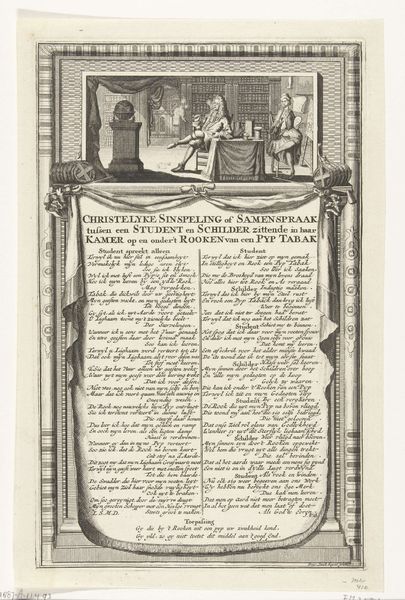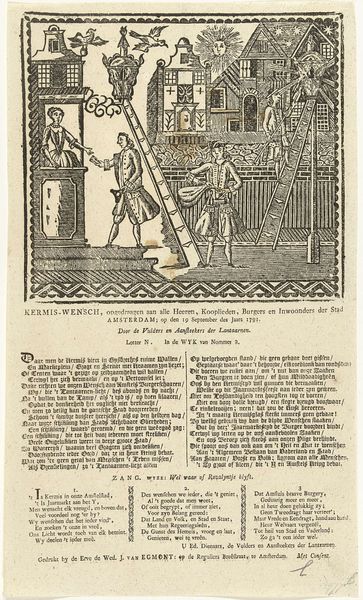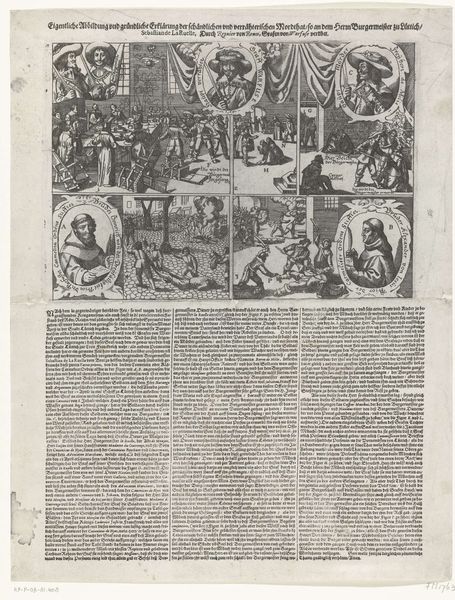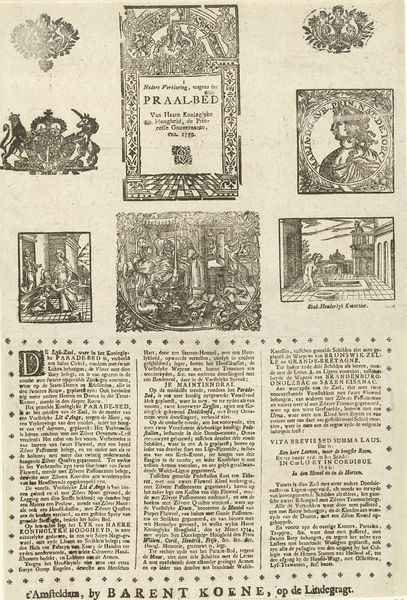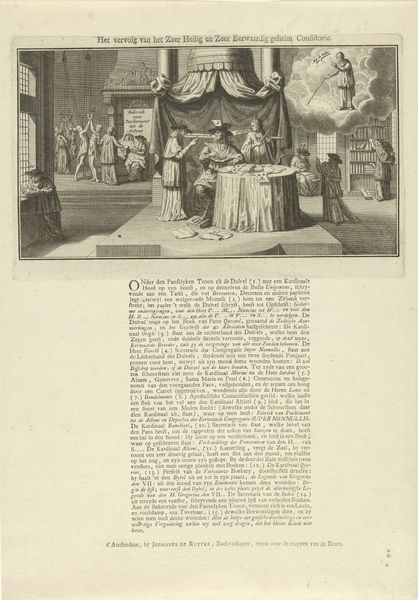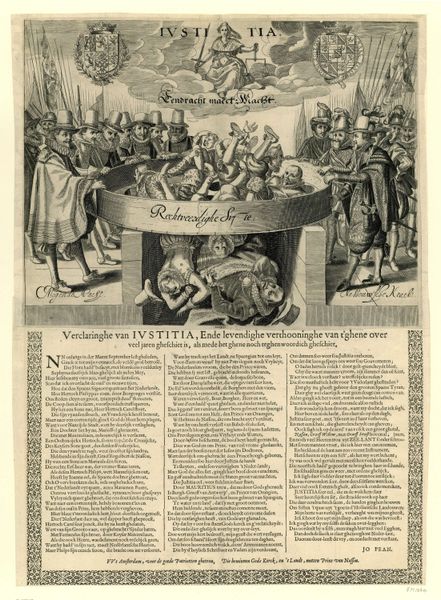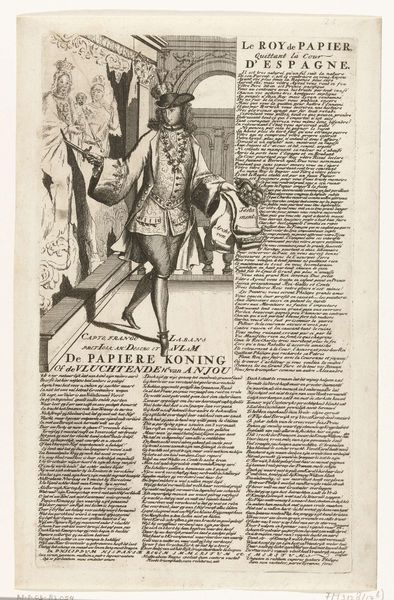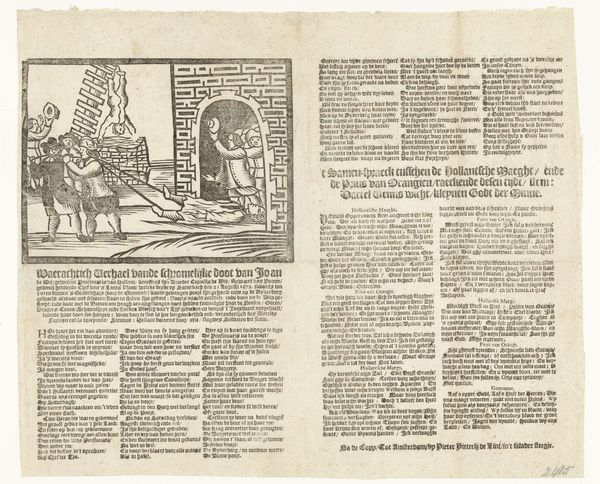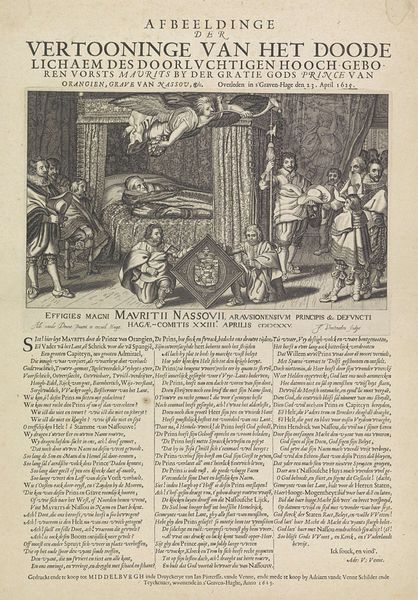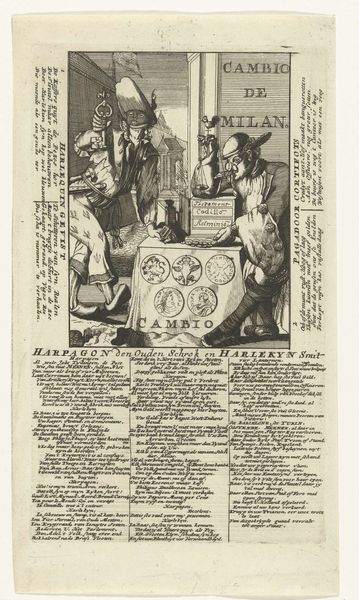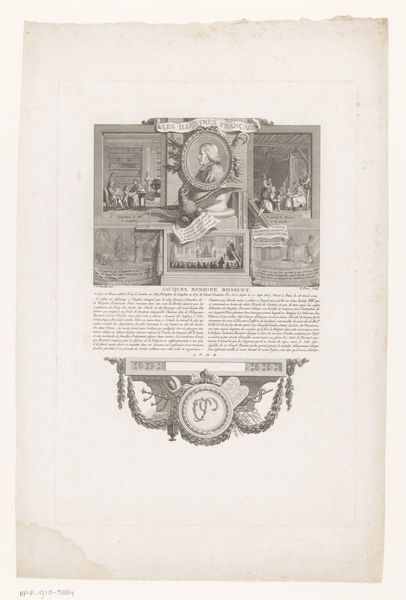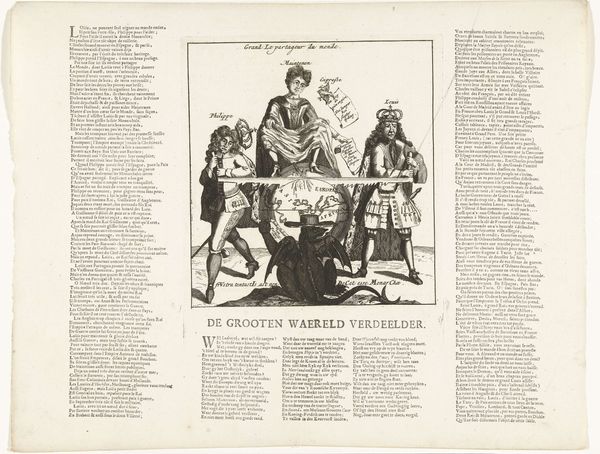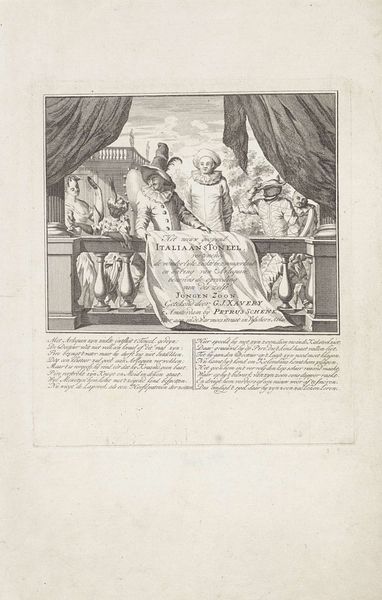
print, engraving
#
narrative-art
#
baroque
#
dutch-golden-age
# print
#
figuration
#
line
#
engraving
Dimensions: height 370 mm, width 273 mm
Copyright: Rijks Museum: Open Domain
Editor: This is an engraving from 1707 called "De slapende boer van Stolwijk," or "The Sleeping Farmer of Stolwijk". It's by an anonymous artist and portrays a man asleep in a large bed. The detail is incredible. It makes me wonder…what's the story here? What do you see in this piece? Curator: This is fascinating! It's not just about a sleeping farmer, it’s about mortality and perhaps the acceptance of fate. The imagery works on multiple levels. Look at the inscription above the framed image – "Tis de mens geset eenmaal te sterve, daar naa toordeel" – it’s reminding us that death is certain and judgment follows. And notice the allegorical figures flanking the scene, they are classical yet twisted – skeletons wound around classical pillars, how are we to understand these strange symbols combined? Editor: The combination is so unexpected! I hadn’t noticed the skeletons until now, the figures seem to carry that message on inevitability. Curator: Exactly. And consider, this isn’t a straightforward depiction of sleep. This man's "noytgehoorde Slaap" (unprecedented sleep) might represent something beyond the ordinary rest. Given the Dutch Golden Age context and their fixation on morals and vanitas, how do we understand this deep, strange rest? It is tempting to equate this sleep with a kind of spiritual forgetting before judgement. Editor: So it’s not *just* a farmer sleeping, but a symbolic representation of death and the fleeting nature of life? Curator: Precisely! And remember, symbols weren't arbitrary; they were understood visual cues within that cultural moment. Think of these not as literal symbols, but encoded memories and understandings to do with fate, morality, and remembrance of what comes next. Editor: I see, like a visual sermon. This has really given me a lot to think about. Curator: For me, it demonstrates how everyday imagery can carry profound philosophical weight, using symbols deeply rooted in cultural consciousness. It shifts how I understand prints from this period, revealing deeper symbolic intentions.
Comments
No comments
Be the first to comment and join the conversation on the ultimate creative platform.
